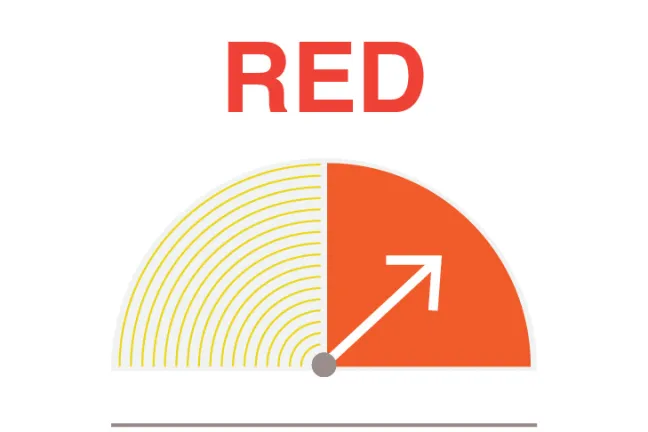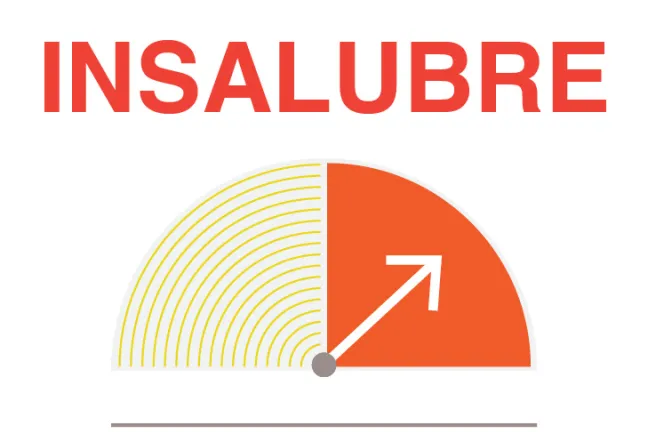Smoke from wildfires in Idaho, Washington, and Oregon is blanketing the Portland Metro area leading health officials today, Saturday, Sept. 10, 2022, to issue a mandatory wood burning restriction for residents in Multnomah County. This restriction does not apply to cooking. Exemptions are available for those in emergency situations.
The air quality burn restriction goes into effect today at noon, and will be lifted when conditions improve. Air quality advisories are posted at multco.us/woodsmokestatus. Conditions are expected to improve Sunday.
The restriction comes alongside the Multnomah County Fire Defense Board issued burn bans for fire safety and an Oregon Department of Environmental Quality air quality advisory that mentions that Multnomah County may see periods of poor air quality through Saturday.
This is the fifth warm season wood-burning restriction – also called a red day – since the Multnomah County Board of Commissioners extended the County’s wood smoke curtailment ordinance year-round in February 2022, and the first this year due to wildfire smoke and particle pollution. The others have been due to ozone pollution levels on hot days.
While most of Multnomah County is currently in the moderate Air Quality Index(AQI) category, conditions are expected to worsen this Saturday afternoon, alongside rising temperatures, before getting some relief by noon Sunday. Air quality could reach AQI levels of Unhealthy for Sensitive Groups(orange) and Unhealthy for all (red).
For information on places to stay cool visit Help for When It’s Hot. Protect your health and reduce pollution.
People at risk
People at the greatest risk of complications from smoke exposure include pregnant women, children, people with pre-existing heart disease, people with chronic lung disease, and older individuals.
People who work outdoors are also at elevated risk. For those who must work, wear a properly fitted N95-rated mask and take breaks inside a structure or even in your car.
What should you do
Stay inside with windows and doors closed (if temperatures allow). If it is too hot indoors, seek cooler indoor air.
- Avoid spending time outside, and avoid strenuous exercise outdoors.
- If available, set AC to recirculate , use an air cleaner with a HEPA filter, or build your own DIY air cleaner.
- Avoid being on the roads if visibility worsens.
Keep an eye on air quality near you:
- The Oregon Department of Environmental Quality has a phone app to track air quality.
- If that is overwhelming, you can find other links to air quality maps below or on our website.
When air quality improves (yellow or green AQI), even temporarily, air out your home to reduce indoor air pollution. People in homes that are too warm to stay inside with the windows closed, or who are at-risk of smoke-related health effects, should seek shelter elsewhere.
Know the symptoms
The symptoms of wildfire smoke most reported include scratchy throat, stinging or watery eyes, stuffy nose, sinus irritation, coughing, trouble breathing, and tiredness or dizziness.
Mild symptoms of smoke exposure often include:
- Cough
- Headache
- Burning eyes
- Sore throat
- Phlegm production
- Changes in breathing
Dry cough, sore throat, and difficulty breathing are common to both wildfire smoke exposure and COVID-19. Contact your doctor if you believe you are experiencing symptoms of COVID-19. But smoke exposure can also cause serious and life-threatening respiratory distress, including heart attacks and strokes. If you’re in distress, you should immediately dial 9-1-1.
Gauging air quality
Wildfires and smoke have swept the West Coast. Some air quality monitors may have lost power. Air quality web systems may periodically get overwhelmed by traffic, causing web-based maps to slow or fail to load. To find air quality information visit:
- Oregon Smoke Blog: Local, state, tribal and federal organizations coordinate to share information about wildfires and smoke.
- Oregon Air Quality map: The state Department of Environmental Quality updates a map of current air quality. Due to high traffic, the site can slow or crash. The sites below offer good alternatives.
- EPA Air Quality map: The U.S. Environmental Protection Agency pulls real-time air quality data from Oregon and Washington States.
- State of Oregon Fires Map: The Oregon Office of Emergency Management updates a map of active fires, air quality and closures.
Visibility
If you can’t access AQI information, the Oregon Department of Environmental Quality shares this 5-3-1 visibility index to help estimate smoke levels:
- Five miles: air quality is generally good.
- Three to five miles: air quality is unhealthy for young children, older adults, pregnant women, and people with heart or lung disease, asthma or other respiratory illness.
- Less than three miles: air quality is unhealthy for everyone.
- Less than one mile: the air quality is unhealthy for everyone.
Your body
Healthy people affected by smoke may have only mild symptoms. But healthy people may also have underlying health conditions that put them at risk. Listen to your body’s cues:
If your eyes are burning, if your throat is sore, if your lungs are having a hard time expanding, if you are coughing, stay inside and focus on creating a “Clean Room” where the air is as clean as possible.
Wood Burning Violations
To report a fire and get it extinguished, call 911. To report a suspected violation of a mandatory burn restriction and smoke from a recreational fire, contact Multnomah County Environmental Health:
- Call 503-988-0035
- Submit a Web form: /health/staying-healthy/webform/file-complaint-red-or-yellow-day
- For fire safety, report the fire to your local fire department
Stay Informed of wood burning restrictions:
- Advisories and restrictions are published on the county’s Wood Winter Wood Burning Restriction page.
- Advisories and restrictions are shared through social media, including Facebook ,Twitter, Instagram and NextDoor.
- Residents may sign up to receive emails of wood burning advisories and restrictions
- Residents may sign up to receive text alerts by texting START to (503) 994-2876.
##


